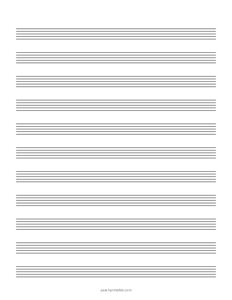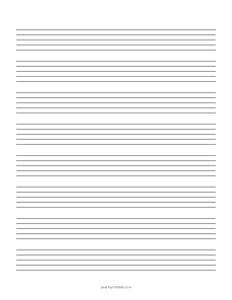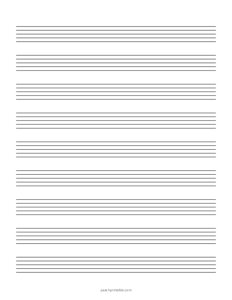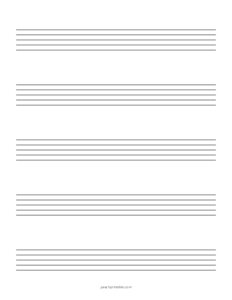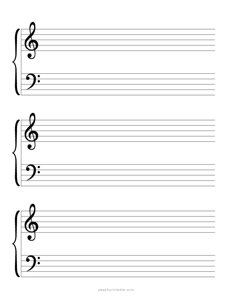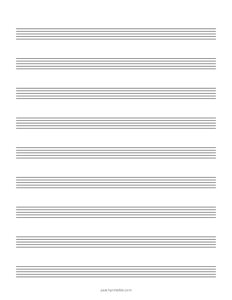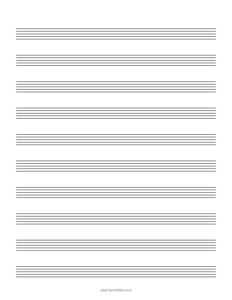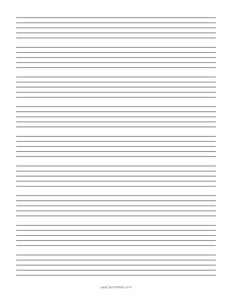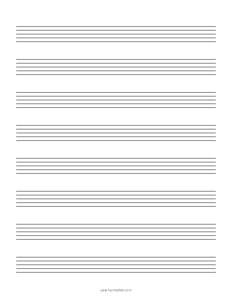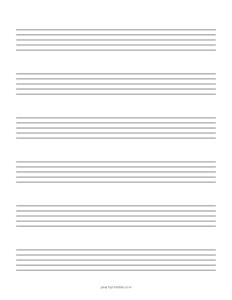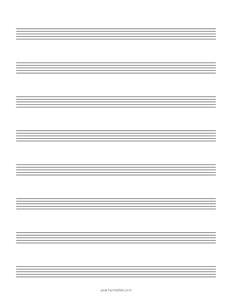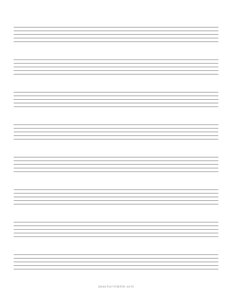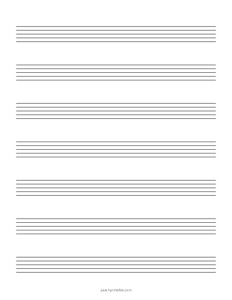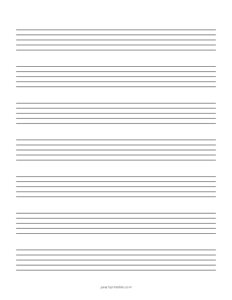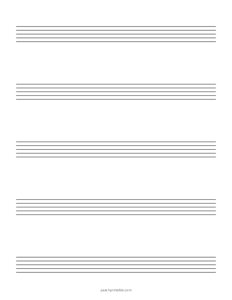Music Staff Paper Templates
Music staff paper, also known as manuscript paper or music notation paper are commonly used by composers and songwriters to write down their musical ideas. It provides a structured format for notating melodies, harmonies, rhythms, and other musical elements.
Showing 1-15 of 17 records
Music Manuscript Paper - 11 Small Staves
Music Manuscript Paper - 8 Large Staves
Music Manuscript Paper - 9 Medium Staves
Music Manuscript Paper - 5 Large Staves
Blank Sheet Music Printable
Music Manuscript Paper - 9 Small Staves
Music Manuscript Paper - 10 Small Staves
Music Manuscript Paper - 9 Large Staves
Music Manuscript Paper - 8 Medium Staves
Music Manuscript Paper - 6 Large Staves
Music Manuscript Paper - 8 Small Staves
Blank Staff Paper
Music Manuscript Paper - 7 Medium Staves
Music Manuscript Paper - 7 Large Staves
Music Manuscript Paper - 5 Medium Staves
Music staff paper, also known as manuscript paper or music notation paper, is a type of paper with pre-printed horizontal lines and spaces arranged in a specific pattern. These lines and spaces are used for writing musical notation, including notes, clefs, key signatures, and other symbols. Here's more about music staff paper and its uses:
Features:
- Staff Lines: The most prominent feature of music staff paper is the presence of five horizontal lines, typically drawn evenly across the page. These lines represent the staff, which serves as the foundation for writing musical notes and symbols.
- Spaces: The spaces between the lines on the staff are also utilized for writing musical notation. There are four spaces between the five lines of the staff.
- Clefs: Music staff paper often includes one or more clefs at the beginning of each staff. Common clefs include the treble clef (G clef), bass clef (F clef), and sometimes the alto clef or tenor clef. Clefs indicate the pitch range of the notes written on the staff.
- Bar Lines: Vertical lines called bar lines are drawn across the staff to divide the music into measures. Bar lines help organize the rhythm and structure of the music.
- Time Signature: Music staff paper typically includes a time signature at the beginning of each staff. The time signature indicates the meter or rhythm of the music, including the number of beats per measure and the note value representing one beat.
Uses:
- Composition: Music staff paper is commonly used by composers and songwriters to write down their musical ideas. It provides a structured format for notating melodies, harmonies, rhythms, and other musical elements.
- Arranging: Arrangers use music staff paper to create arrangements of existing music, adapting pieces for different instruments or ensembles. They may also use staff paper to write out parts for individual musicians within an ensemble.
- Transcription: Musicians and educators use music staff paper to transcribe music from audio recordings or other sources into written notation. Transcription allows musicians to study and perform music that may not be available in published sheet music.
- Music Education: Music staff paper is an essential tool for teaching music theory, sight-reading, and ear training. Students learn to recognize and write musical notation, understand the relationship between pitch and rhythm, and develop their musical literacy skills.
- Practice: Musicians use music staff paper for practice exercises, including sight-reading exercises, improvisation, and composition assignments. Writing out music by hand helps reinforce understanding of musical concepts and improves musicianship skills.
- Performance: While many musicians use digital devices for reading music during performances, some still prefer to use printed sheet music on music staff paper. Printed sheet music provides a tangible format for musicians to read from, especially in situations where electronic devices may not be practical or reliable.
Overall, music staff paper is an indispensable tool for musicians, composers, educators, and music enthusiasts alike. It provides a structured format for writing, analyzing, and sharing musical ideas, facilitating the creation and interpretation of music in various contexts.

